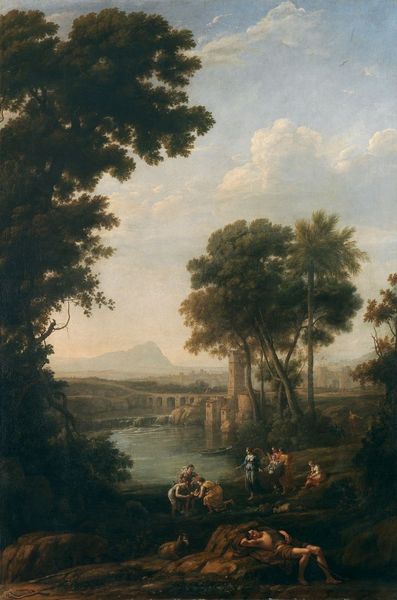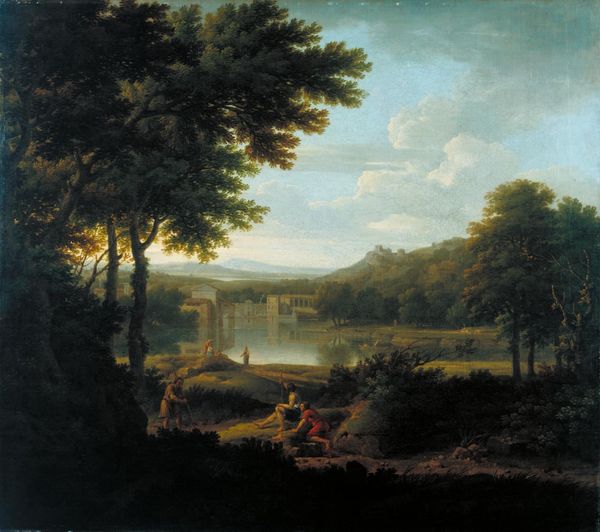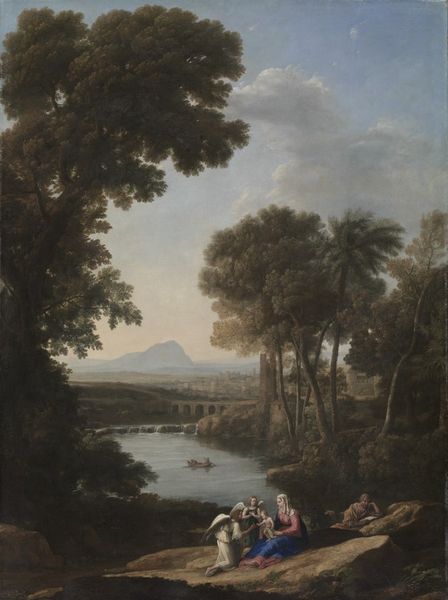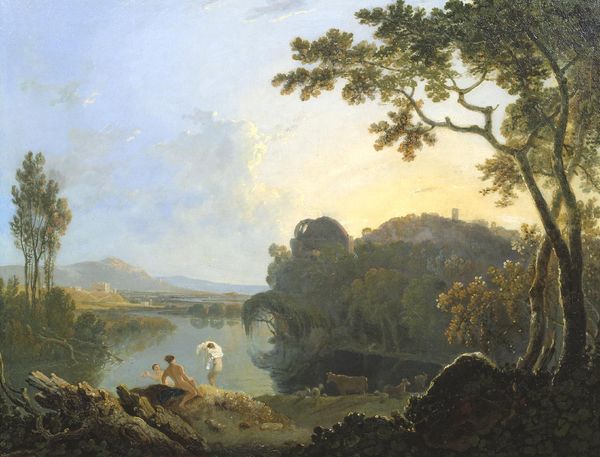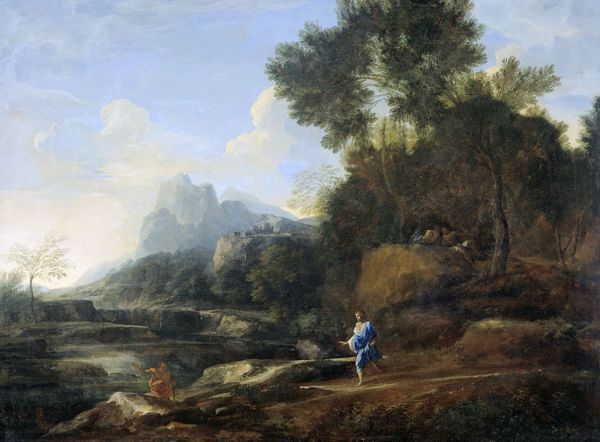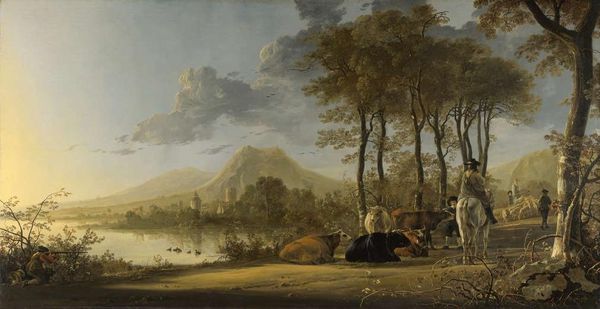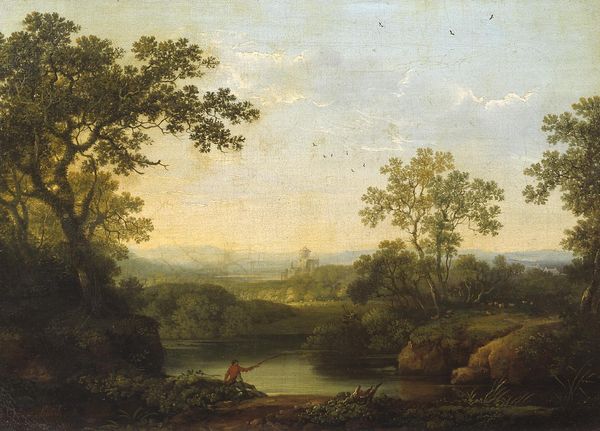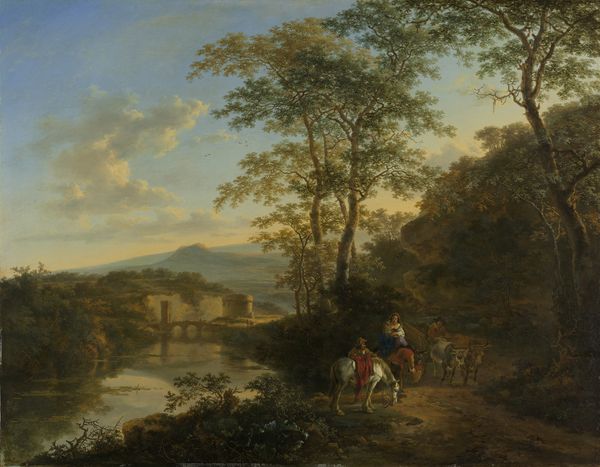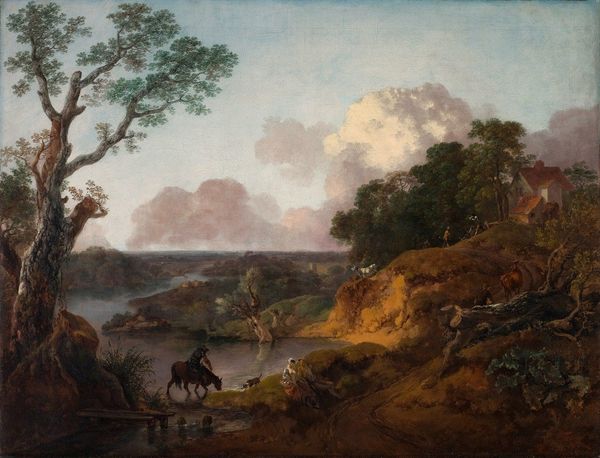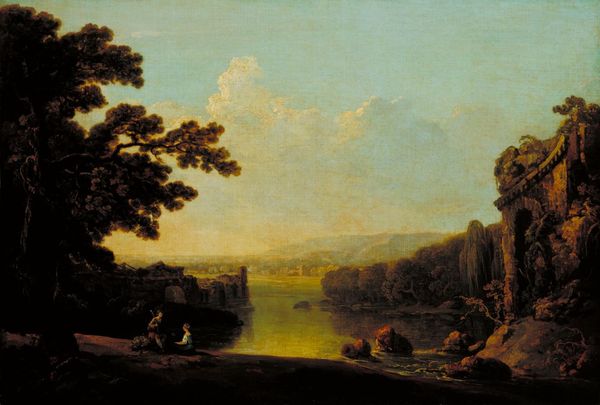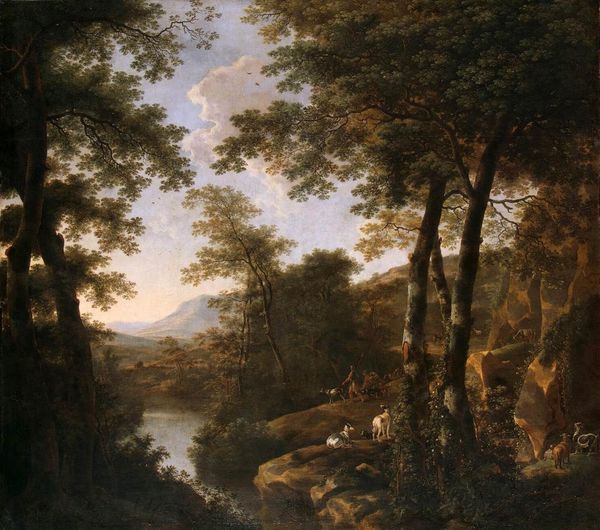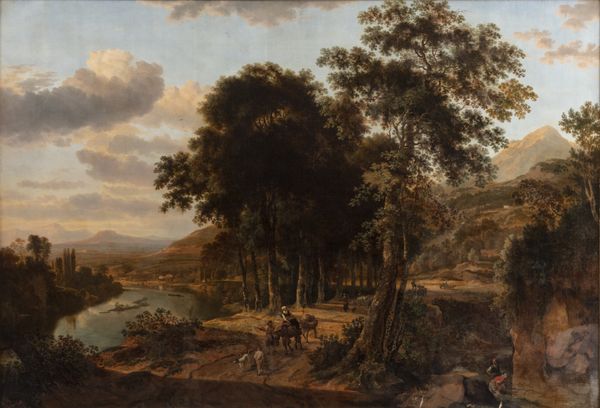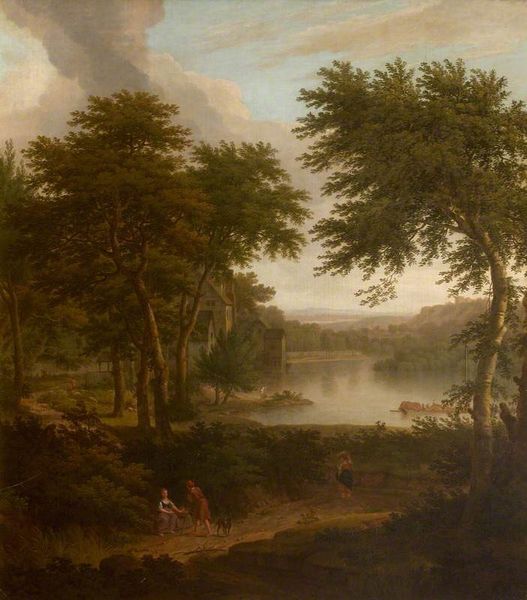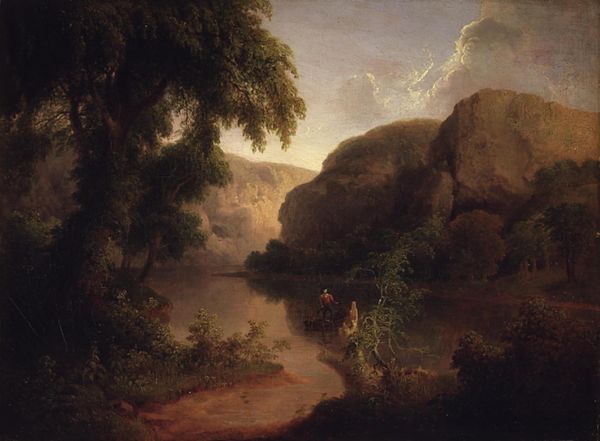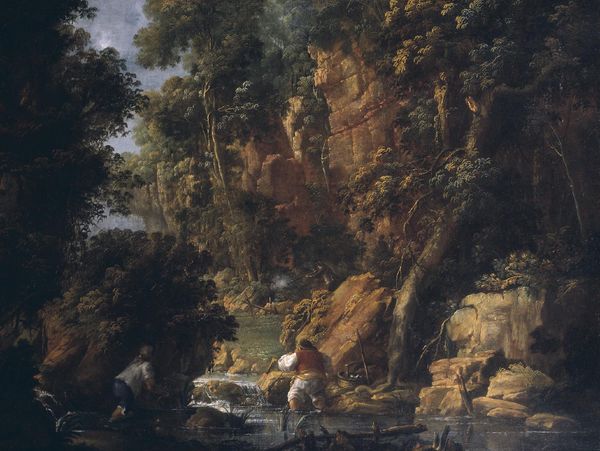
Copyright: National Gallery
Claude Lorrain painted "Landscape with Hagar and the Angel" in the 17th century, using oil on canvas. Biblical scenes were common in art, but Claude's integration of landscape is striking. The story of Hagar, cast out into the wilderness, is secondary to the idealized Italian countryside. The image serves as a display of wealth and culture, reflecting the tastes of the aristocratic patrons who acquired such works for their collections. Claude's landscapes, while seemingly serene, are products of a society marked by inequality and the patronage system. To fully understand the painting, one must delve into the social history of the time, examining patronage records, travel accounts, and the philosophical writings. Art, in this context, becomes a window into the values and power structures of its era.
Comments
No comments
Be the first to comment and join the conversation on the ultimate creative platform.
